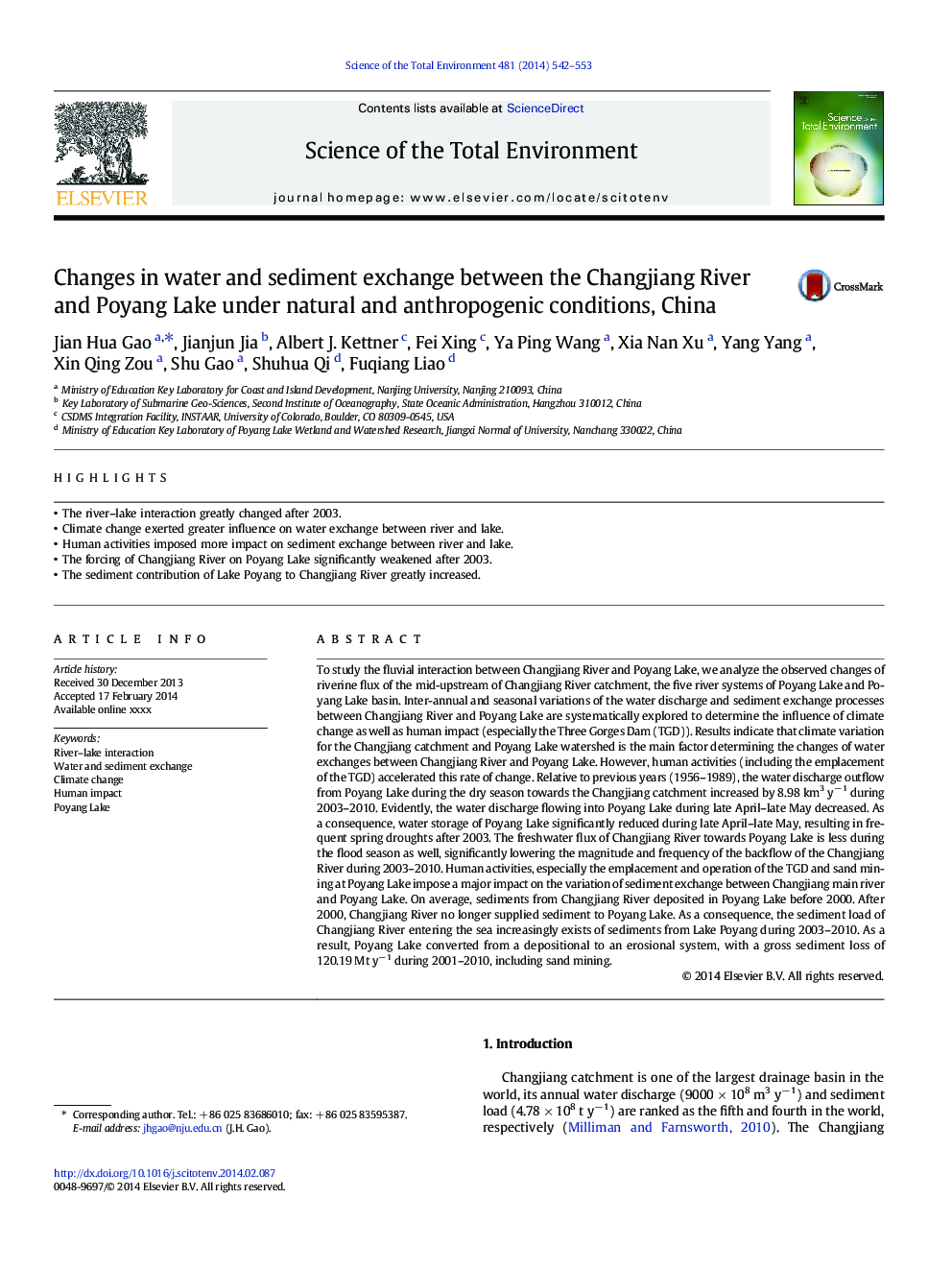| کد مقاله | کد نشریه | سال انتشار | مقاله انگلیسی | نسخه تمام متن |
|---|---|---|---|---|
| 6330901 | 1619786 | 2014 | 12 صفحه PDF | دانلود رایگان |
عنوان انگلیسی مقاله ISI
Changes in water and sediment exchange between the Changjiang River and Poyang Lake under natural and anthropogenic conditions, China
ترجمه فارسی عنوان
تغییرات در انتقال آب و رسوب بین رودخانه چانگجیانگ و دریاچه پوینانگ تحت شرایط طبیعی و انسان شناسی، چین
دانلود مقاله + سفارش ترجمه
دانلود مقاله ISI انگلیسی
رایگان برای ایرانیان
موضوعات مرتبط
علوم زیستی و بیوفناوری
علوم محیط زیست
شیمی زیست محیطی
چکیده انگلیسی
To study the fluvial interaction between Changjiang River and Poyang Lake, we analyze the observed changes of riverine flux of the mid-upstream of Changjiang River catchment, the five river systems of Poyang Lake and Poyang Lake basin. Inter-annual and seasonal variations of the water discharge and sediment exchange processes between Changjiang River and Poyang Lake are systematically explored to determine the influence of climate change as well as human impact (especially the Three Gorges Dam (TGD)). Results indicate that climate variation for the Changjiang catchment and Poyang Lake watershed is the main factor determining the changes of water exchanges between Changjiang River and Poyang Lake. However, human activities (including the emplacement of the TGD) accelerated this rate of change. Relative to previous years (1956-1989), the water discharge outflow from Poyang Lake during the dry season towards the Changjiang catchment increased by 8.98 km3 yâ 1 during 2003-2010. Evidently, the water discharge flowing into Poyang Lake during late April-late May decreased. As a consequence, water storage of Poyang Lake significantly reduced during late April-late May, resulting in frequent spring droughts after 2003. The freshwater flux of Changjiang River towards Poyang Lake is less during the flood season as well, significantly lowering the magnitude and frequency of the backflow of the Changjiang River during 2003-2010. Human activities, especially the emplacement and operation of the TGD and sand mining at Poyang Lake impose a major impact on the variation of sediment exchange between Changjiang main river and Poyang Lake. On average, sediments from Changjiang River deposited in Poyang Lake before 2000. After 2000, Changjiang River no longer supplied sediment to Poyang Lake. As a consequence, the sediment load of Changjiang River entering the sea increasingly exists of sediments from Lake Poyang during 2003-2010. As a result, Poyang Lake converted from a depositional to an erosional system, with a gross sediment loss of 120.19 Mt yâ 1 during 2001-2010, including sand mining.
ناشر
Database: Elsevier - ScienceDirect (ساینس دایرکت)
Journal: Science of The Total Environment - Volume 481, 15 May 2014, Pages 542-553
Journal: Science of The Total Environment - Volume 481, 15 May 2014, Pages 542-553
نویسندگان
Jian Hua Gao, Jianjun Jia, Albert J. Kettner, Fei Xing, Ya Ping Wang, Xia Nan Xu, Yang Yang, Xin Qing Zou, Shu Gao, Shuhua Qi, Fuqiang Liao,
